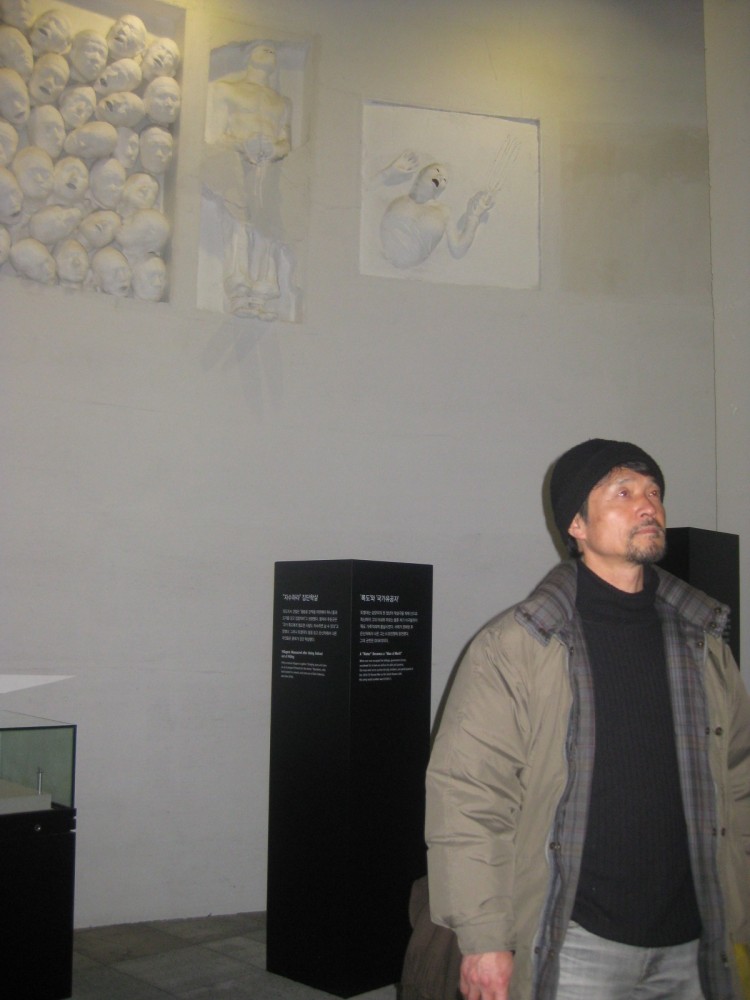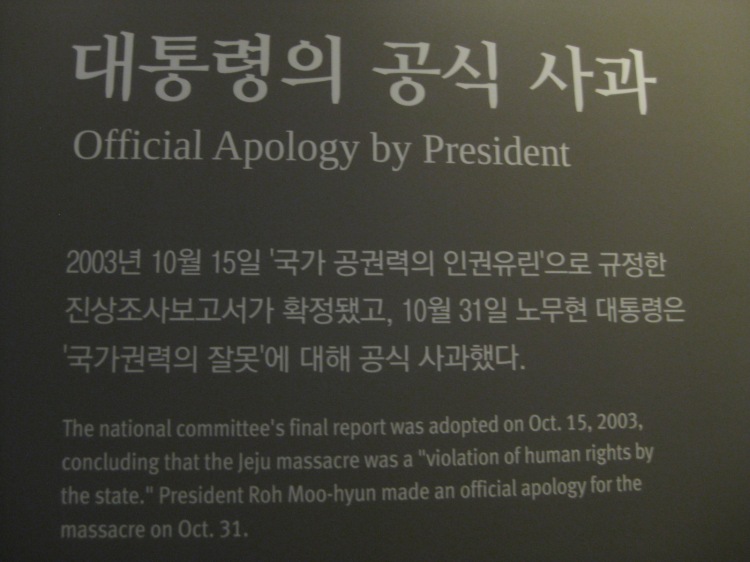The history of Jeju is violent and bloody.
In a not too distant history more than 30 000 people died on Jeju.
Some estimates say that as many as 80 000 were massacred in what is referred to as the April 3d incident or the Jeju uprising.
Only 3 years before, in 1945, the US used atomic nuclear bombs on Hiroshima and Nagasaki, ending the pacific part of WWII. The war in Europe had ended a couple of months before and with that the Japanese occupation of Korea. A new political map of Korea was drawn mainly together with The Soviet Union.
The name, April 3rd incident refers to civilians being shot by the police during a demonstration in 1948. It also marks the starting point of a 7 year brutal battle between the South Korean Army and the villagers of Jeju island
The South Korean government, under the direction of the United States, maintained a systematic slaughter of the residents of Jeju Island. The people had preferred a united Korea and refused to participate in the fight over the country’s political system; this nonviolent stand was perceived as a serious threat by the United States and South Korea, and so, the people were attacked and massacred. The rebellion included the mutiny of several hundred members of the South Korean 11th Constabulary Regiment.
Most people died through fighting or execution. The visual artist and Jeju born Gillchun Koh portrays paths to death during the uprising in the “4.3 Peace Museum”.
Many people also fled to Japan and were unable to return back to Korea for many years.
The trauma of war and conflict is still fresh. It is possible that the announcement of Jeju as an island of peace, coming after an apology from the President helped the reconciliation process.
It is also possible that building a peace museum for the killed, which include a special place for the 4000 people still missing and not accounted for, makes it a little easier for the now living relatives and friends. A place of remembrance. A physical place to visit. A site where the names are engraved.
But still.
For many, the thought of the construction of an American Naval base in their village. With warships and 7000 soldiers. Brings back memories of terror. Many have living relatives deeply traumatized by the war, occupation and the uprising. They know the cost of thinking that approaching and solving conflicts with weapons and violence is very high.
—————————————-
These are only the 4000 graves of the missing people from the Jeju Uprising. 
*Reblogged posts do not necessarily reflect the opinions or views of Save Jeju Now






